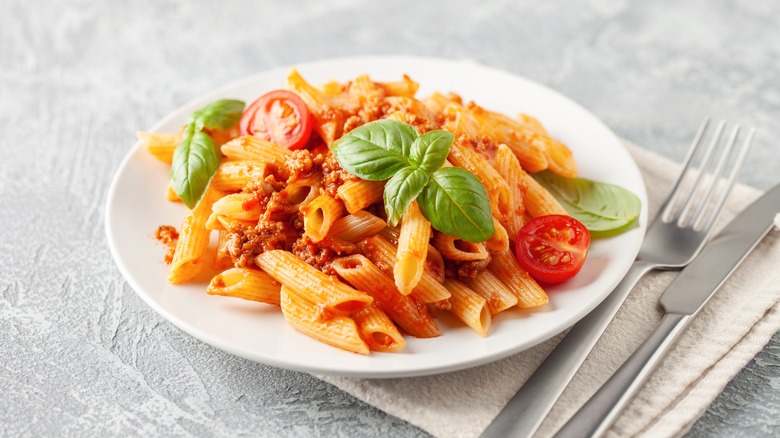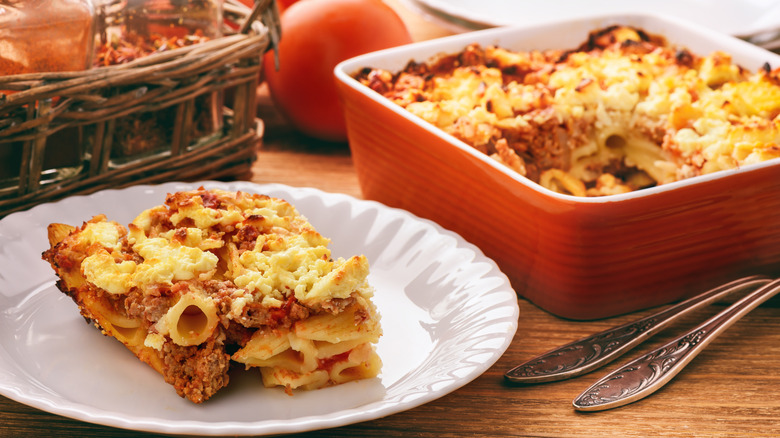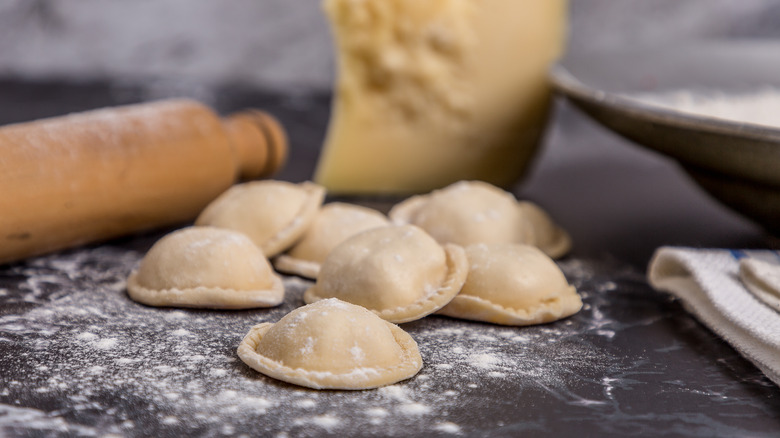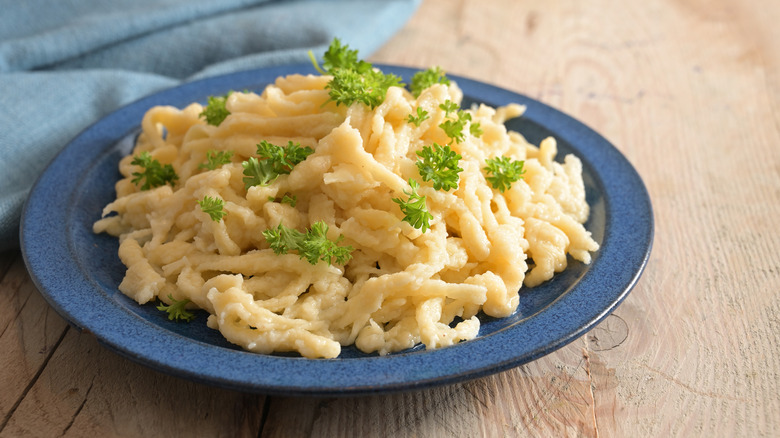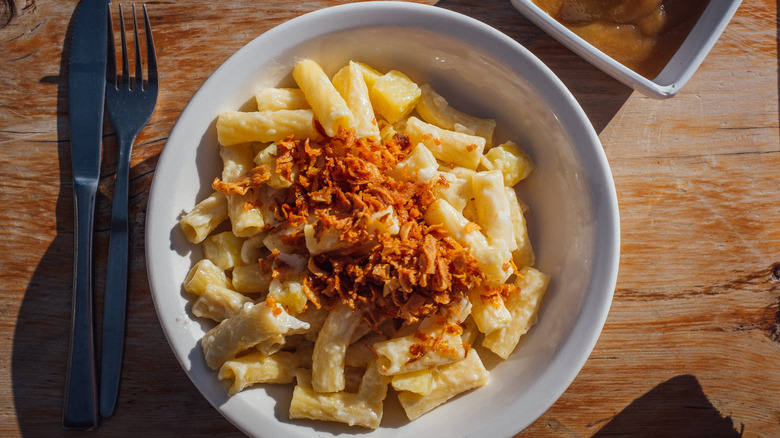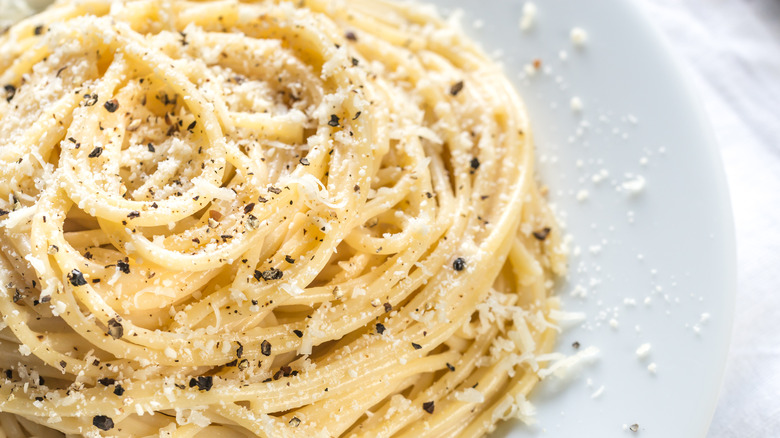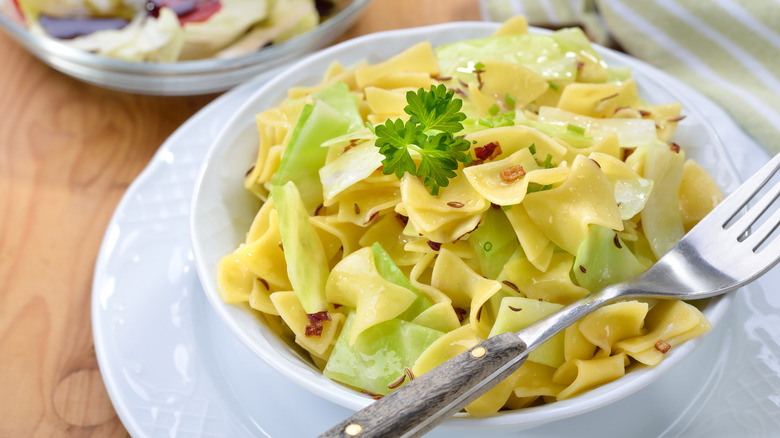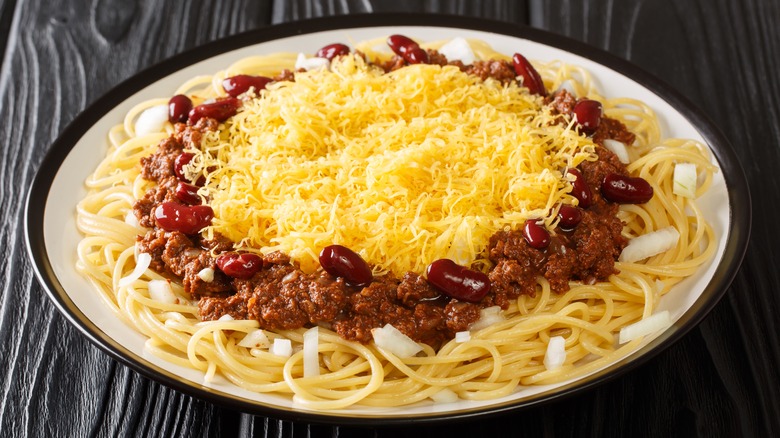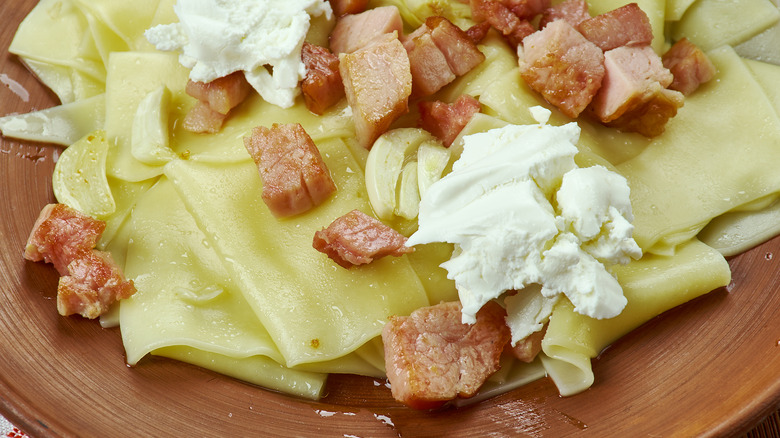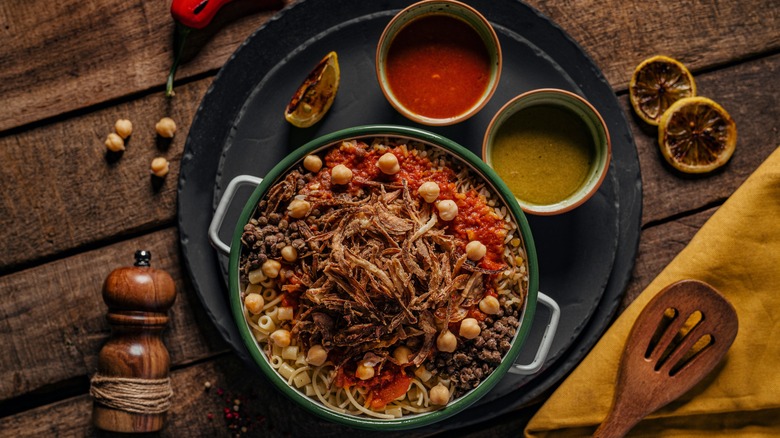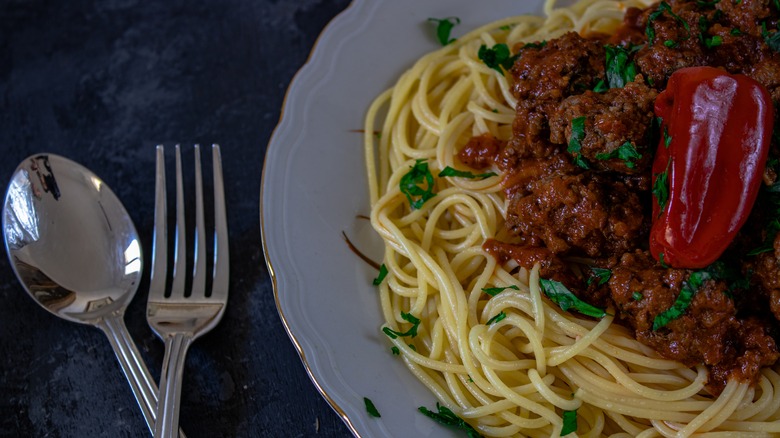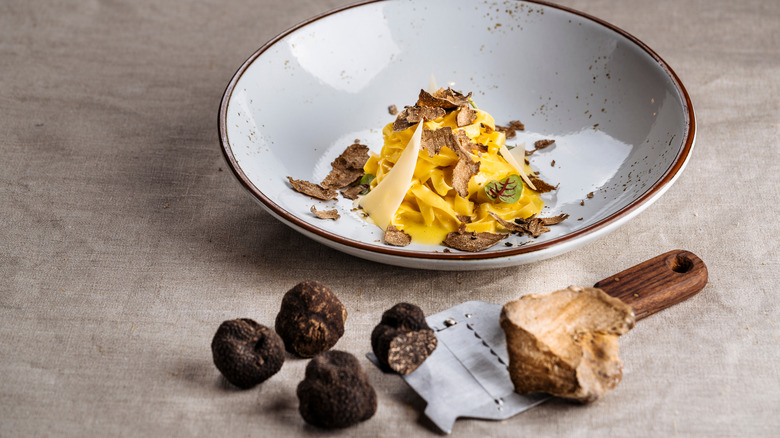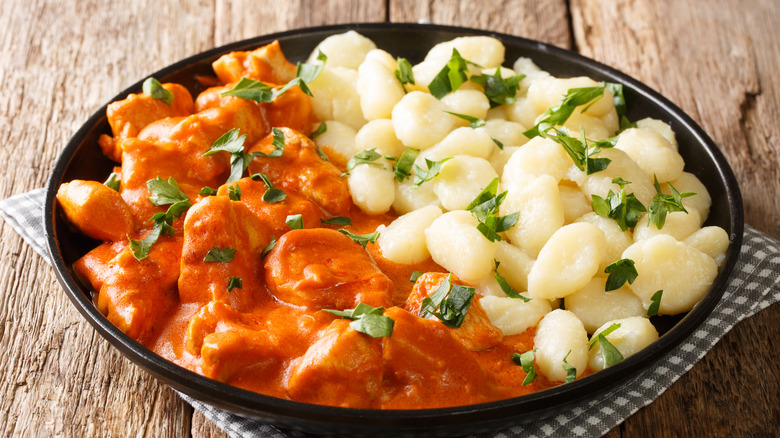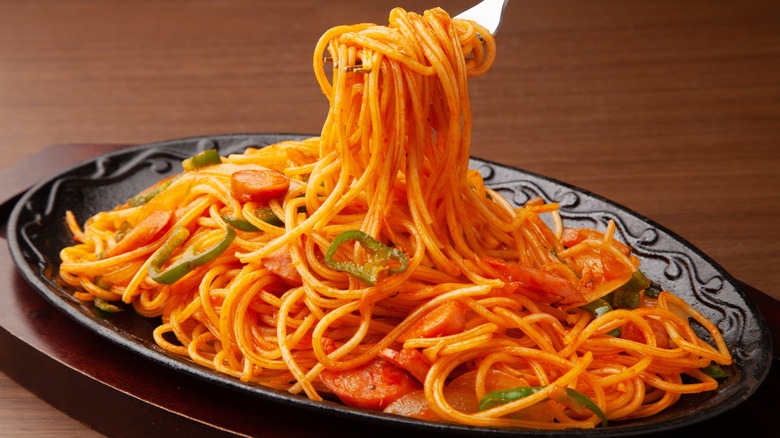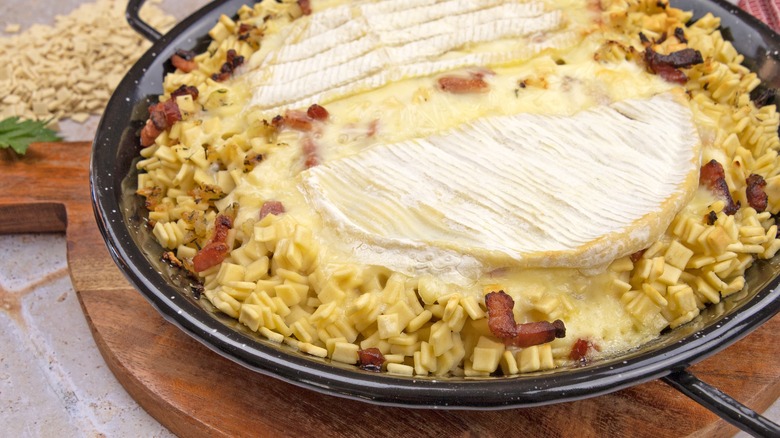14 Pasta Dishes From Around The World
Studying the traditional foods from different cultures is an excellent way to teach ourselves about what makes each city, region, or country unique. By examining ingredients used in native dishes, we can learn about foreign agriculture, economics, and population health. From preparation methods, we may glean insights surrounding more abstract points like family structure, faith, and local legends. Cooking dishes from around the world provides wonderful, immersive learning opportunities; and, as a bonus, you'll expose yourself and your dinner partners to some crackerjack new recipes.
There are some foods with a basic structure that take on various forms in different countries: Take sandwiches, for example. From a good old Philly cheesesteak to a spicy Mexican torta to a fresh Vietnamese banh mi, you'll be hard-pressed to find a country that doesn't partake in the humble sandwich. Like the sandwich, variations on pasta can be found all around the globe in a myriad of exciting forms. Pasta dishes from each country can be distinguished by different types of pasta (there's so much more than spaghetti), limitless sauces, and toppings galore. Many recipes incorporate ingredients specific to a certain region, like the truffles of Croatia's Istrian peninsula or the chickpeas of Egypt. From South America to Asia to Italy, here are pasta dishes from all around the globe.
Pastitsio from Greece
Greece's answer to lasagna, pastitsio is made from layers of savory meat (usually ground beef), creamy béchamel sauce, and long, hollow pastitsio noodles versus flat lasagna. Per The Passionate Foodie, the recipe originated in Greece as early as the 16th century in the form of pasticcio, a savory pie baked into a pastry shell. In the mid-20th century, Greek chef Nikólaos Tselementés created pastitsio (along with other well-loved dishes like moussaka) by combining French cooking techniques with the foods beloved in Greece. Tselementés bid the pastry shell adieu and transformed the dish into a casserole.
Nowadays, pastitsio remains a common dish in Greece as well as in Greek restaurants around the world. The updated version is delicious, savory, and quite easy to prepare at home. Real pastitsio pasta, which consists of long, hollow noodles, can be tough to track down, but penne or mostaccioli make for good substitutes. The rest of the ingredients are readily available in most grocery stores. Pastitsio pasta makes up the base of this tantalizing recipe — once the pasta is cooked and layered in the bottom of a casserole pan, a tantalizing beef and tomato sauce flavored with baking spices like cloves and cinnamon is poured over them. The entire dish is then topped with creamy béchamel, sprinkled with cheese, and baked in the oven for a final dish that will knock your socks off.
Sorrentinos from Argentina
Sorrentinos are a little-known Argentinian dish that shares much in common with Italy's classic ravioli. However, Sorrentinos are larger and more circular than their Italian counterparts. Though they're traditionally stuffed with ham, ricotta, and mozzarella cheeses, they are served today with a broad assortment of fillings. The origin of this South American stuffed pasta is murky. As 196 Flavors explains, it's equally possible that Sorrentinos were invented by an Italian grandmother living in Argentina who shared a recipe with the owner of a local restaurant, by a cook who served his take on ravioli at a restaurant called Sorrentos in Buenos Aires (leading to the name Sorrentino), or entirely in Italy when a Sorrentinian food connoisseur asked a chef to prepare an original pasta — however, there is no pasta by the name "Sorrentino" that exists in Italy today.
Mysterious origins aside, Sorrentinos remain popular in Argentina, and local restaurants and pasta factories enjoy coming up with creative stuffings for the round pasta. They can be filled with just about anything you can dream up, including different meats (chicken is a popular substitute for ham), veggies (think mushrooms, tomatoes, eggplant, or zucchini), and cheese (some recipes experiment with more flavorful cheeses like feta rather than the traditional mozzarella and ricotta). If ravioli is your jam, make sure you try this flavorful pasta dish should you ever find yourself in Argentina — or experiment with making your own at home.
Spätzle from Germany
Those who appreciate the intricacies of traditional, by-hand pasta-making are sure to fall for German spätzle. According to German Food Guide, these versatile egg noodles can be traced as far back as 1725 in Germany, but the prevailing belief is that spätzle is much older than that; although it's unclear exactly when or how this pasta came into fruition. Today, spätzle is still enjoyed in Germany as well as in Austria. Spätzle dough is made from water, eggs, flour, and salt, and is considerably more moist than traditional Italian pasta dough — therefore, special preparation methods are called for.
These noodles were traditionally made by spreading the spätzle dough over a wet cutting board, slicing the dough into thin strips, and then tipping the strips directly into a pot of boiling salted water. As you might imagine, all of that slicing and dicing takes time, so over the years, other preparation tools and methods have emerged, including special presses, colanders, and slicers. Once the noodles have been boiled long enough to rise to the top of the pot, they are strained out of the water and served right away, usually with cheese, stewed meats, or creamy sauces. The sky's the limit when it comes to spätzle, and you can make your own right at home. Serve the egg noodles with a decadent béchamel sauce and a lamb ragu.
Älplermagronen from Switzerland
What comes to mind when you think of macaroni and cheese? A steaming bowl of Kraft right off the stovetop? Smoky bacon mac from a barbecue restaurant? A thick square of deep-dish baked macaroni at the Thanksgiving dinner table? Mac and cheese has many forms, and Americans tend to think it originated right here in the states — however, the cheesy pasta delicacy's roots may be traced back to an unexpected source: the Swiss Alps. According to BBC, Älplermagronen was commonly eaten by shepherds in Switzerland who required a dish that was easy to carry around with them while they tended their flocks. Given that macaroni noodles were lightweight and they could make the cheese themselves from the milk of their herds, Älplermagronen (also known as Swiss alpine macaroni or herdsman's macaroni) was a natural solution.
Nowadays, Älplermagronen is still a popular comfort food in Switzerland. Its composition is quite simple, consisting of macaroni, cheese, and cubed potatoes. There are some key differences between Älplermagronen and macaroni and cheese. The pasta is cooked directly in the milk until a sort of béchamel sauce is formed, (per Switzerland Times), and this hearty plate includes cubed potatoes and often onion and chives for additional flavor. Additionally, Älplermagronen's ingredients are layered into a casserole dish and baked, making it more similar to a baked mac and cheese casserole dish than the stovetop version Americans tend to use for a quick fix today.
Cacio e pepe from Italy
One of the most popular kinds of pasta in Italy also happens to be perhaps the most simple: Cacio e pepe. The pasta dish, which translates to "cheese and pepper," is exactly what it sounds like: cheese, pepper, pasta, and pasta water. Unlike some of the other pasta dishes on this list, there's no debating where cacio e pepe originated — the city of Rome has proudly claimed cacio e pepe as its own for millennia. The pasta was born of necessity: As La Cucina Italia tells it, shepherds on the outskirts of the city needed food that was both filling and easy to transport. Dried spaghetti, pecorino cheese, and black pepper fit the bill and were combined for a meal that was basic, yet nourishing and delicious.
Part of the allure of cacio e pepe is that it contains only four ingredients, and yet, the ratios used when combining them leave room for infinite possibilities. As the News Tribune reported, a Los Angeles chef who spent 23 days in Rome eating cacio e pepe found endless variations on the simple dish. Different pasta shapes, varying thicknesses of black pepper grains, creaminess or dryness of the sauce, and other factors made each plate unique. Today, you'll find cacio e pepe at Italian restaurants all over the world — in fact, it's become such a hit that you can even find several cacio e pepe-flavored items at Trader Joe's, including jarred pasta sauce, puffs, and gnocchi.
Krautfleckerl from Austria
What is in a name? When it comes to krautfleckerl pasta, what you see in the name is really what you get: Kraut means white cabbage, while fleckerl are tiny pasta squares. Put the two together, and you've got krautfleckerl, an Austrian pasta dish featuring pasta, cabbage, onions, garlic, and spices. The short, square noodles — or "fleckerl" — are usually made with eggs. If you're keen to create krautfleckerl at home, most any type of egg noodle will do — although the square shape is traditional and frankly looks beautiful when cooked and paired with the bright green cabbage.
The only other must-have ingredient here is cabbage, which is usually sautéed in a pan with onion and seasonings before being combined with the cooked pasta. Krautfleckerl is an excellent, hearty, filling vegetarian dish — and if you're cooking for a vegan crowd, you can swap out egg-free noodles for a vegan meal. Alternatively, ham, bacon, or pancetta can be added during the cooking process to beef things up.
Cincinnati chili from the USA
Many U.S. states have their own variations on chili, but Cincinnati's version has to take home the gold medal for "most unique." As reported by Cincinnati Magazine, Cincinnati chili was created by the Kiradjieff brothers who opened an Ohio restaurant in the early 1920s. Taking inspiration from their Mediterranean roots, they created a chili with similar flavors to pastitsio and moussaka — a sort of meat ragu flavored with rich, sweet baking spices rather than the savory flavors found in other American chilis. The unique profile of Cincinnati chili doesn't stop at the chili's taste, however. Rather than serving the chili on its own in a bowl, the brothers chose to slap it on top of a pile of spaghetti noodles.
Cincinnati chili really took off when another pair of brothers, the Lambrinideses, opened Skyline Chili in 1949. At most restaurants, including Skyline, it can be ordered in five ways, from the most basic "just chili" to the "five-way," which is chili, spaghetti, cheese, beans, and onions. Cincinnati chili is cause for great controversy among chili experts, who argue about whether it should be labeled as a chili at all, but this unique pasta dish holds a special place in the hearts of Cincinnatians and is certainly a fascinating piece of Midwest culinary history.
Lazanki from Belarus
Hailing from Belarus, lazanki is a popular dish across Belarus, Poland, and Lithuania today. According to legend (per Culture.PL), Bona Sforza, the Italian wife of the Polish 16th century King Sigismund I, is responsible for opening Poland's eyes to the wonders of the Italian cuisine of the time, emphasizing vegetables and introducing the population to pasta. In lazanki's original form, pieces of dough were placed in layers over the filling ingredients and baked like a casserole. In fact, it's thought that the name "lazanki" comes from "lasagna."
Today, there are many variations of the traditional recipe. Typically, the flattened dough is shaped into squares, boiled, and topped with fried lard and onions. Pickled cabbage is included in most recipes, along with mushrooms and sausage or bacon. This leads to quite an unusual flavor combination: It's not common to find the vinegar-heavy taste of pickled cabbage, the saltiness of the bacon, and the umami flavor of mushrooms together in one dish. The traditional topping or filling is uniquely Eastern European and is often eaten on Christmas Eve in Belarus and surrounding countries.
Koshary from Egypt
A wildly popular street food in Egypt, koshary (also spelled koshari or kushari) consists of pasta, rice, and lentils tossed in a tomato sauce and topped with chickpeas and fried onions. Unlike some of the other pasta dishes on this list, koshary is a relatively new concept, according to NPR. The dish may be popular in Egypt today, but it is not commonly found outside the country.
Each element of koshary — rice, lentils, pasta, sauce, chickpeas, and fried onions — is prepared separately, which means that the recipe and resulting plates can vary wildly between families and vendors. Once the base has been thrown together, the savory Egyptian meal is usually topped with flavorful garlic vinegar and Middle Eastern hot sauce known as shatta. Koshary is very affordable, and whether it is homemade or prepared at a restaurant, this pasta plate is delicious and sure to impress.
Makaruna imbaukha from Libya
When we think about preparing pasta, boiling is typically the first method that comes to mind, but that doesn't mean boiling is the only way to do it. The people of Libya make a sweet and savory dish called makaruna imbaukha with steamed pasta. To steam the pasta, a nest of angel hair noodles is quickly dipped into a combination of water and olive oil, then placed in a steamer basket above a pot of boiling water for about 45 minutes to soften and cook.
The flavors of makaruna imbaukha are incredibly complex: Once the pasta has cooked, it's combined with meat (typically lamb), pumpkin, and raisins. The flavors are then brought together by an unexpectedly savory tomato, onion, and chickpea sauce with touches of cloves, black pepper, ginger, and shaiba leaves. For a final touch, the dish is rounded off with orange flower water and cinnamon. It's customary to serve makaruna imbaukha with mseyer, a Libyan relish consisting of quick-pickled vegetables like cucumbers, pickles, and peppers. The final effect is an explosion of flavors ranging from sweet to tangy to savory to floral, with the steamed pasta lending a notable texture to the entrée.
Fuži s tartufima from Croatia
Chicago Tribune writer Karen Torme Olson once described Istria, a triangular peninsula jutting out from Croatia into the Adriatic Sea, as "Italy without the price." In fact, there was a time not so long ago when Istria actually was Italy. As Brittanica adds, the peninsula was seized from Austria by Italy and under Italian rule between the first and second world wars, and only became part of Croatia in 1991. In spite of its many shifts in leadership throughout the 19th and 20th centuries, Istria has retained much Italian culture, and a love for pasta combined with an excellent climate for truffle-growing led to the classic Croatian dish of fuži s tartufima.
Truffles have an impeccably delicate flavor and shine best when not fighting other powerful flavors for the limelight. Fuži is made by taking large sheets of pasta dough, cutting it into diamond shapes, then rolling the diamonds into tube shapes and securing the ends together. To make fuži s tartufima, the handmade pasta is cooked in boiling water, then topped with a sauce made from butter and Istrian truffles. It's a simple Croatian meal taken to the next level by the country's prized mushrooms.
Csipetke from Hungary
Csipetke, or "pinched noodles," are really a cross between a noodle and a dumpling. These "noodles" are made using just eggs, flour, a small amount of water, and a pinch of salt. To make csipetke at home, simply mix together the main ingredients, pinch off fingertip-sized pieces one at a time, and drop them directly into boiling water or broth. Since each piece is made by hand, each noodle will have its own unique shape.
While "csipetke" only refers to the hand-pinched pasta, these noodle/dumpling hybrids are used in (or served alongside) many dishes, from chicken paprikash to traditional Hungarian goulash. While they can be prepared on their own, they're also available at grocery stores and online, making them a cheap, easy, and filling addition to a meal. The egg in csipetke noodles allows them to stay firm and retain their shape, so they're a great choice if you're cooking something that will definitely result in leftovers for tomorrow's lunch.
Naporitan from Japan
Tomato-based sauces for pasta are used widely around the world. From acidic marinara to salty puttanesca to spicy arrabbiata, these sauces are all the rage, and many chefs have high standards surrounding what constitutes an appropriate tomato sauce. Does sugar belong in marinara? Fresh or dried herbs? Canned or fresh tomatoes? One thing you'll rarely hear anyone advocate for is using ketchup in place of tomatoes, but Japan's Naporitan pasta presents a ready challenger for that viewpoint. According to Nippon, Naporitan was created by Irie Shigetada, a chef in Yokohama who was inspired by the meals he saw occupying soldiers eating during World War II, which often consisted simply of spaghetti and ketchup.
Shigetada's version of Naporitan actually used tomato puree in place of ketchup — however, post-war, ketchup was in abundance in Japan while tomato puree was difficult to find, so many people resorted to making Naporitan with ketchup. Today, the dish is served with spaghetti, ketchup, mushrooms, sausage, bacon, onions, and bell peppers. While it's not considered the most classy of dishes in a culture so renowned for its cuisine, Naporitan is regarded with fond nostalgia by many older Japanese people who remember it from the old days.
Gratin de Crozets from France
Located in Southeastern France, Savoie is a mountainous region known for producing unusual cheeses, and the area has its own distinctive pasta to go along with them: Gratin de Crozets. Per Taste of Savoie, Crozets can be traced all the way back to the 1600s in the Tarentaise Valley, where they were handcrafted by housewives with wheat or buckwheat flour. The recipe and preparation remain largely unchanged to this day: Wheat or buckwheat dough is rolled out and dried at a cool temperature for two days, then cut into very small squares and cooked in boiling water until soft.
In the case of gratin de Crozets, the Crozet pasta is combined with onions, ham or lardons, crème fraîche, chicken stock, and grated cheese — often a local Savoie variety like Beaufort or Tomme — for a rich, creamy delicacy (lactose intolerants, steer clear). Because this is quite a heavy, nutrient-light dish, gratin de Crozets is best served with a light side or salad.
